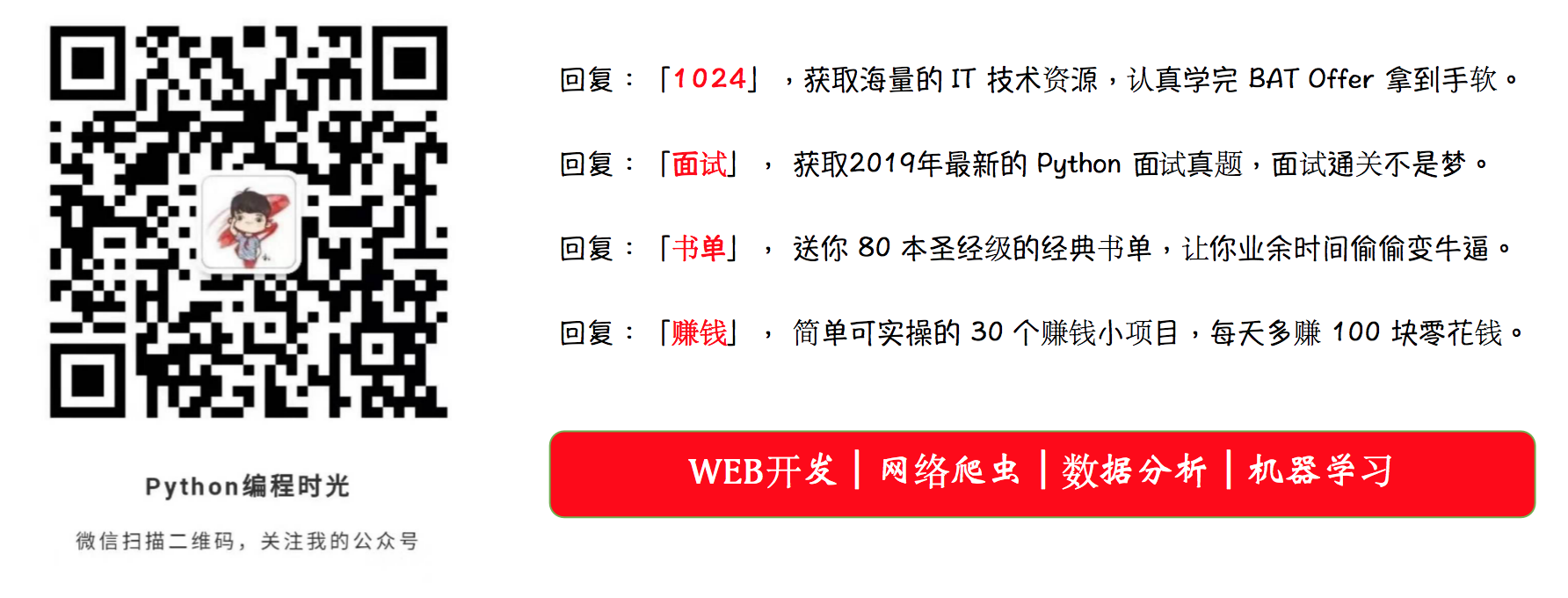大家好,并发编程 进入第四篇。
本文目录
- 前言
- Event事件
- Condition
- Queue队列
- 总结
. 前言
前面我已经向大家介绍了,如何使用创建线程,启动线程。相信大家都会有这样一个想法,线程无非就是创建一下,然后再start()下,实在是太简单了。
可是要知道,在真实的项目中,实际场景可要我们举的例子要复杂的多得多,不同线程的执行可能是有顺序的,或者说他们的执行是有条件的,是要受控制的。如果仅仅依靠前面学的那点浅薄的知识,是远远不够的。
那今天,我们就来探讨一下如何控制线程的触发执行。
要实现对多个线程进行控制,其实本质上就是消息通信机制在起作用,利用这个机制发送指令,告诉线程,什么时候可以执行,什么时候不可以执行,执行什么内容。
经过我的总结,线程中通信方法大致有如下三种:
- threading.Event
- threading.Condition
- queue.Queue
先抛出结论,接下来我们来一一探讨下。
. Event事件
Python提供了非常简单的通信机制 Threading.Event,通用的条件变量。多个线程可以等待某个事件的发生,在事件发生后,所有的线程都会被激活。
关于Event的使用也超级简单,就三个函数
event = threading.Event()
# 重置event,使得所有该event事件都处于待命状态
event.clear()
# 等待接收event的指令,决定是否阻塞程序执行
event.wait()
# 发送event指令,使所有设置该event事件的线程执行
event.set()
举个例子来看下。
import time
import threading
class MyThread(threading.Thread):
def __init__(self, name, event):
super().__init__()
self.name = name
self.event = event
def run(self):
print('Thread: {} start at {}'.format(self.name, time.ctime(time.time())))
# 等待event.set()后,才能往下执行
self.event.wait()
print('Thread: {} finish at {}'.format(self.name, time.ctime(time.time())))
threads = []
event = threading.Event()
# 定义五个线程
[threads.append(MyThread(str(i), event)) for i in range(1,5)]
# 重置event,使得event.wait()起到阻塞作用
event.clear()
# 启动所有线程
[t.start() for t in threads]
print('等待5s...')
time.sleep(5)
print('唤醒所有线程...')
event.set()
执行一下,看看结果
Thread: 1 start at Sun May 13 20:38:08 2018
Thread: 2 start at Sun May 13 20:38:08 2018
Thread: 3 start at Sun May 13 20:38:08 2018
Thread: 4 start at Sun May 13 20:38:08 2018
等待5s...
唤醒所有线程...
Thread: 1 finish at Sun May 13 20:38:13 2018
Thread: 4 finish at Sun May 13 20:38:13 2018
Thread: 2 finish at Sun May 13 20:38:13 2018
Thread: 3 finish at Sun May 13 20:38:13 2018
可见在所有线程都启动(start())后,并不会执行完,而是都在self.event.wait()止住了,需要我们通过event.set()来给所有线程发送执行指令才能往下执行。
. Condition
Condition和Event 是类似的,并没有多大区别。
同样,Condition也只需要掌握几个函数即可。
cond = threading.Condition()
# 类似lock.acquire()
cond.acquire()
# 类似lock.release()
cond.release()
# 等待指定触发,同时会释放对锁的获取,直到被notify才重新占有琐。
cond.wait()
# 发送指定,触发执行
cond.notify()
举个网上一个比较趣的捉迷藏的例子来看看
import threading, time
class Hider(threading.Thread):
def __init__(self, cond, name):
super(Hider, self).__init__()
self.cond = cond
self.name = name
def run(self):
time.sleep(1) #确保先运行Seeker中的方法
self.cond.acquire()
print(self.name + ': 我已经把眼睛蒙上了')
self.cond.notify()
self.cond.wait()
print(self.name + ': 我找到你了哦 ~_~')
self.cond.notify()
self.cond.release()
print(self.name + ': 我赢了')
class Seeker(threading.Thread):
def __init__(self, cond, name):
super(Seeker, self).__init__()
self.cond = cond
self.name = name
def run(self):
self.cond.acquire()
self.cond.wait()
print(self.name + ': 我已经藏好了,你快来找我吧')
self.cond.notify()
self.cond.wait()
self.cond.release()
print(self.name + ': 被你找到了,哎~~~')
cond = threading.Condition()
seeker = Seeker(cond, 'seeker')
hider = Hider(cond, 'hider')
seeker.start()
hider.start()
通过cond来通信,阻塞自己,并使对方执行。从而,达到有顺序的执行。
看下结果
hider: 我已经把眼睛蒙上了
seeker: 我已经藏好了,你快来找我吧
hider: 我找到你了 ~_~
hider: 我赢了
seeker: 被你找到了,哎~~~
. Queue队列
终于到了我们今天的主角了。
从一个线程向另一个线程发送数据最安全的方式可能就是使用 queue 库中的队列了。创建一个被多个线程共享的 Queue 对象,这些线程通过使用put() 和 get() 操作来向队列中添加或者删除元素。
同样,对于Queue,我们也只需要掌握几个函数即可。
from queue import Queue
# maxsize默认为0,不受限
# 一旦>0,而消息数又达到限制,q.put()也将阻塞
q = Queue(maxsize=0)
# 阻塞程序,等待队列消息。
q.get()
# 获取消息,设置超时时间
q.get(timeout=5.0)
# 发送消息
q.put()
# 等待所有的消息都被消费完
q.join()
# 以下三个方法,知道就好,代码中不要使用
# 查询当前队列的消息个数
q.qsize()
# 队列消息是否都被消费完,True/False
q.empty()
# 检测队列里消息是否已满
q.full()
函数会比之前的多一些,同时也从另一方面说明了其功能更加丰富。
我来举个老师点名的例子。
from queue import Queue
from threading import Thread
import time
class Student(Thread):
def __init__(self, name, queue):
super().__init__()
self.name = name
self.queue = queue
def run(self):
while True:
# 阻塞程序,时刻监听老师,接收消息
msg = self.queue.get()
# 一旦发现点到自己名字,就赶紧答到
if msg == self.name:
print("{}:到!".format(self.name))
class Teacher:
def __init__(self, queue):
self.queue=queue
def call(self, student_name):
print("老师:{}来了没?".format(student_name))
# 发送消息,要点谁的名
self.queue.put(student_name)
queue = Queue()
teacher = Teacher(queue=queue)
s1 = Student(name="小明", queue=queue)
s2 = Student(name="小亮", queue=queue)
s1.start()
s2.start()
print('开始点名~')
teacher.call('小明')
time.sleep(1)
teacher.call('小亮')
运行结果如下
开始点名~
老师:小明来了没?
小明:到!
老师:小亮来了没?
小亮:到!
. 总结
学习了以上三种通信方法,我们很容易就能发现Event 和 Condition 是threading模块原生提供的模块,原理简单,功能单一,它能发送 True 和 False 的指令,所以只能适用于某些简单的场景中。
而Queue则是比较高级的模块,它可能发送任何类型的消息,包括字符串、字典等。其内部实现其实也引用了Condition模块(譬如put和get函数的阻塞),正是其对Condition进行了功能扩展,所以功能更加丰富,更能满足实际应用。
